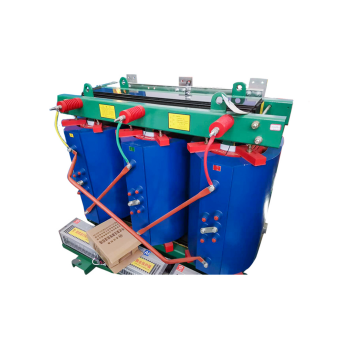What maintenance does a resin dry-type transformer require? Why is it different from oil-immersed transformer?
In the realm of electrical transformers, two prominent categories stand out:
resin dry-type transformers and oil-immersed transformers. Both serve vital roles in power distribution systems, yet they diverge significantly in their maintenance requirements and operational characteristics. Understanding these distinctions is essential for ensuring the efficient and reliable operation of these critical components.
Maintenance Requirements of Resin Dry-Type Transformers:
Resin dry-type transformers are revered for their minimal maintenance demands, owing to their robust design and insulation materials. Here's a breakdown of the maintenance tasks typically associated with these transformers:
Visual Inspection: Regular visual inspections are paramount for detecting any signs of damage or degradation. Technicians examine the transformer's exterior for cracks in the epoxy resin casing or discoloration, which may indicate overheating or other issues.
Cleaning: Periodic cleaning of the transformer surface is necessary to remove dust, dirt, and debris. This ensures unimpeded ventilation and optimal cooling performance, safeguarding against thermal stress.
Terminal and Connection Checks: Inspecting and tightening electrical connections at terminals is crucial to prevent overheating and ensure efficient power transmission. Loose connections can lead to resistance and subsequent heat generation, potentially compromising transformer performance.
Electrical Testing: Routine electrical tests, such as insulation resistance and partial discharge measurements, are conducted to assess the integrity of the transformer's insulation system. Early detection of insulation degradation helps mitigate the risk of electrical faults and prolongs the transformer's lifespan.
Ventilation Maintenance: Adequate ventilation around the transformer must be maintained to dissipate heat effectively. Blocked or restricted airflow can lead to overheating and compromise operational reliability.
Distinguishing Features from Oil-Immersed Transformers:
In contrast to oil-immersed transformers,
resin dry-type transformers exhibit several distinctive characteristics that influence their maintenance requirements:
Oil Monitoring: Unlike their oil-immersed counterparts, resin dry-type transformers do not necessitate monitoring of oil levels or regular oil sampling for analysis. This eliminates the need for specialized equipment and simplifies maintenance procedures.
Oil Leakage Concerns: Oil-immersed transformers pose a risk of oil leakage, particularly in outdoor or subterranean installations. In contrast, resin dry-type transformers, encapsulated in epoxy resin, are impervious to oil leakage, making them suitable for indoor use without the need for containment measures.
Contaminant Vulnerability: Oil-immersed transformers are susceptible to contamination from external sources, such as moisture, dust, and pollutants, which can degrade insulation and impede performance. Resin dry-type transformers, with their sealed construction, are inherently less vulnerable to such contaminants, ensuring greater reliability and longevity.
Mechanical Complexity: Resin dry-type transformers typically have fewer moving parts compared to oil-immersed transformers, reducing the likelihood of mechanical failures and simplifying maintenance requirements. This results in lower maintenance costs and increased operational efficiency over the transformer's lifecycle.

Contact Us